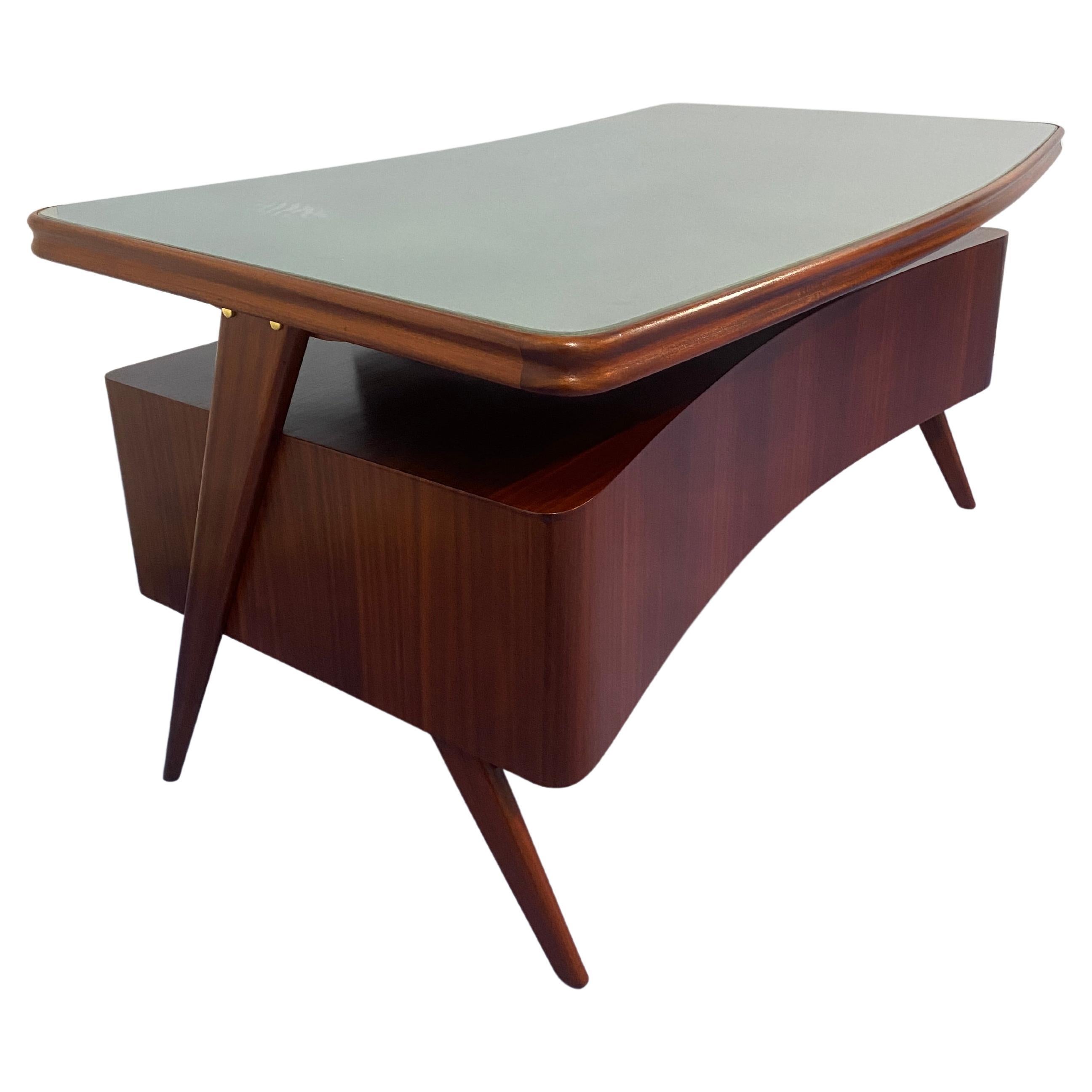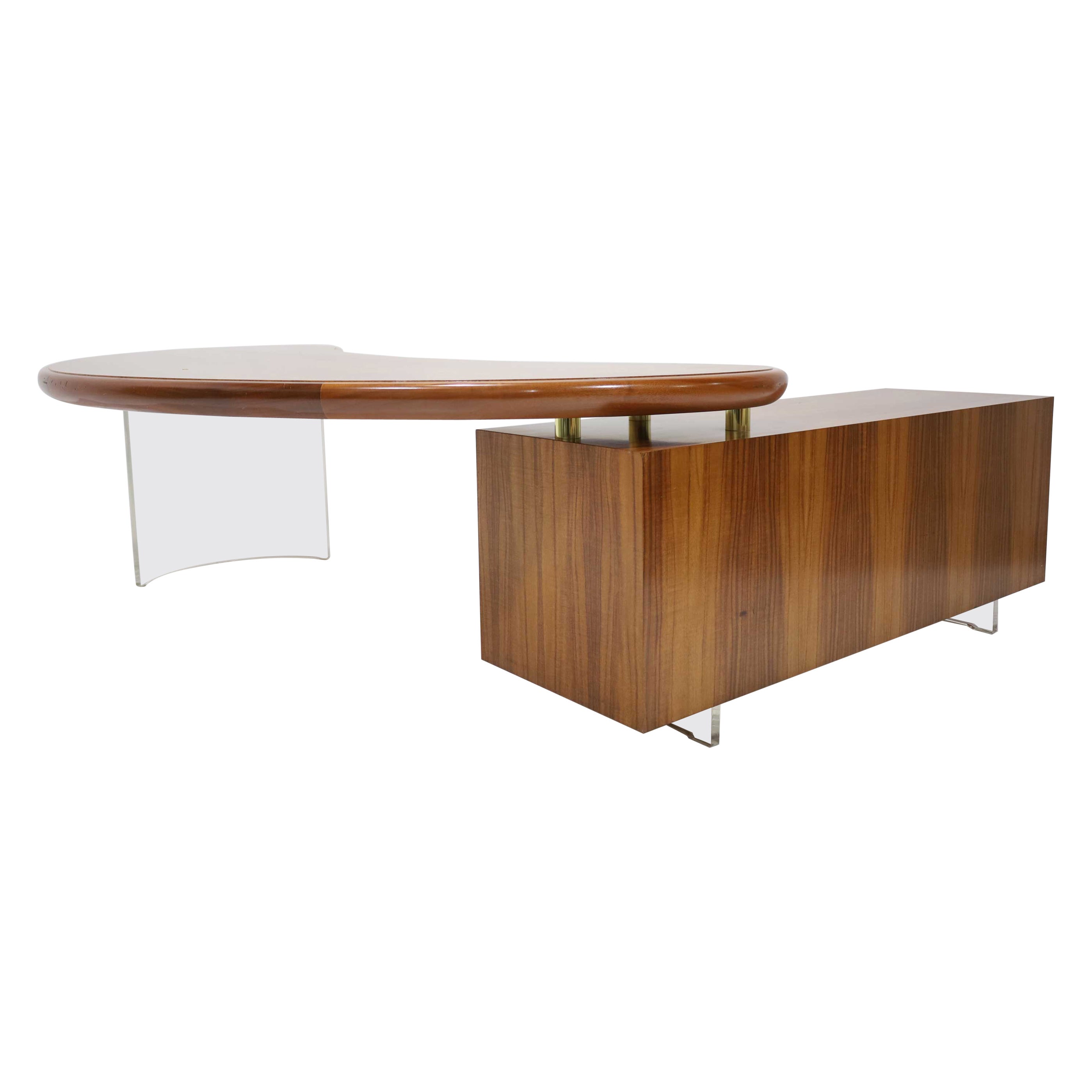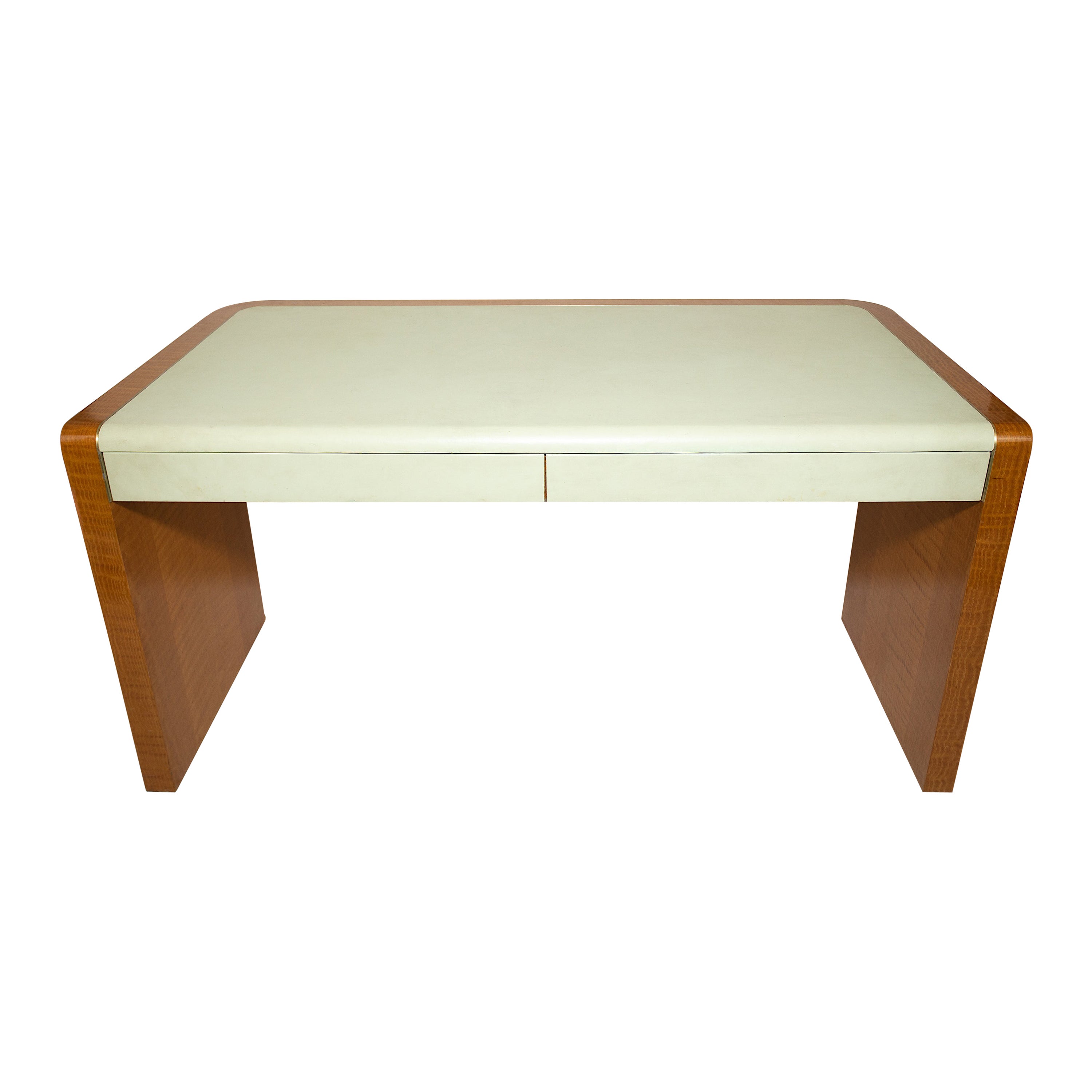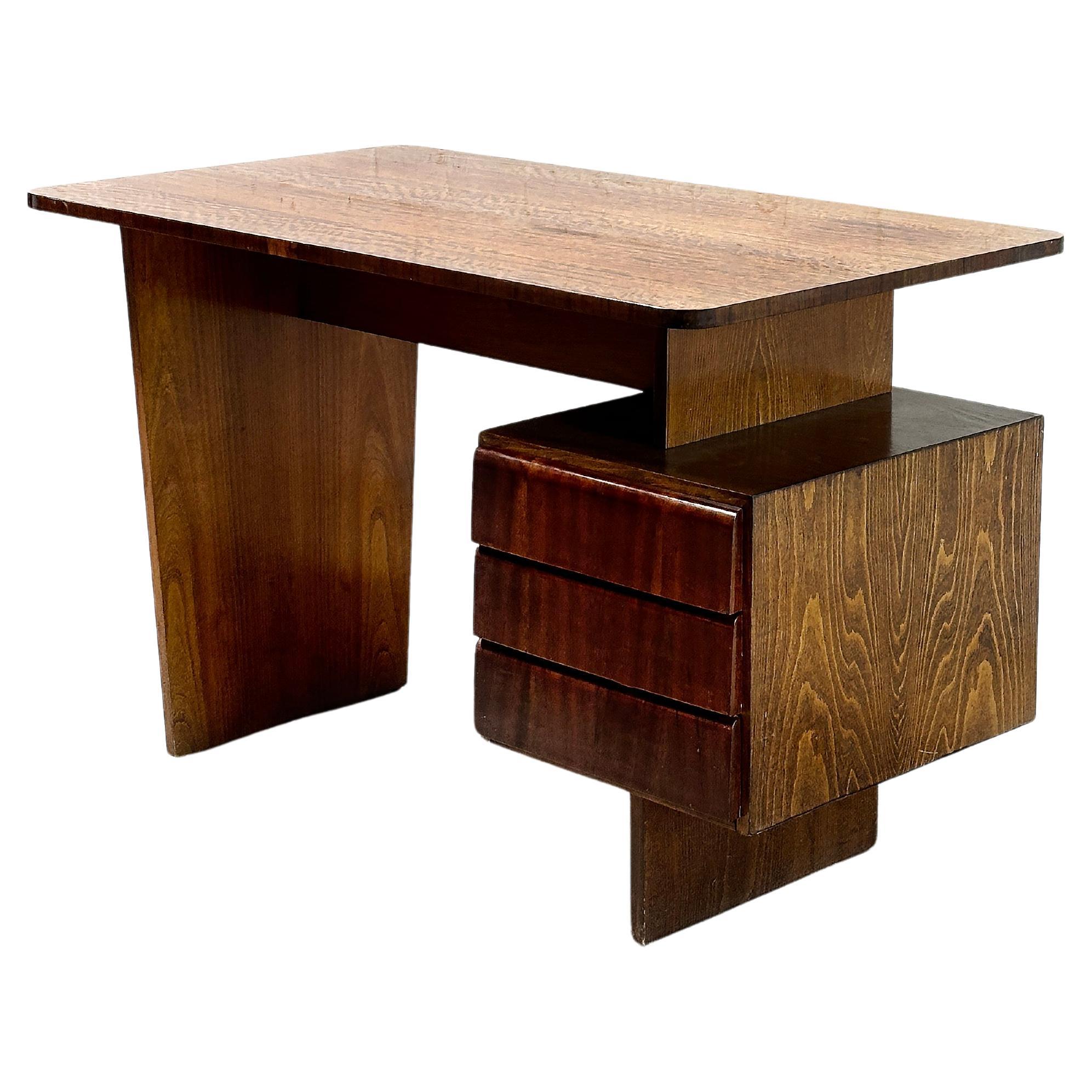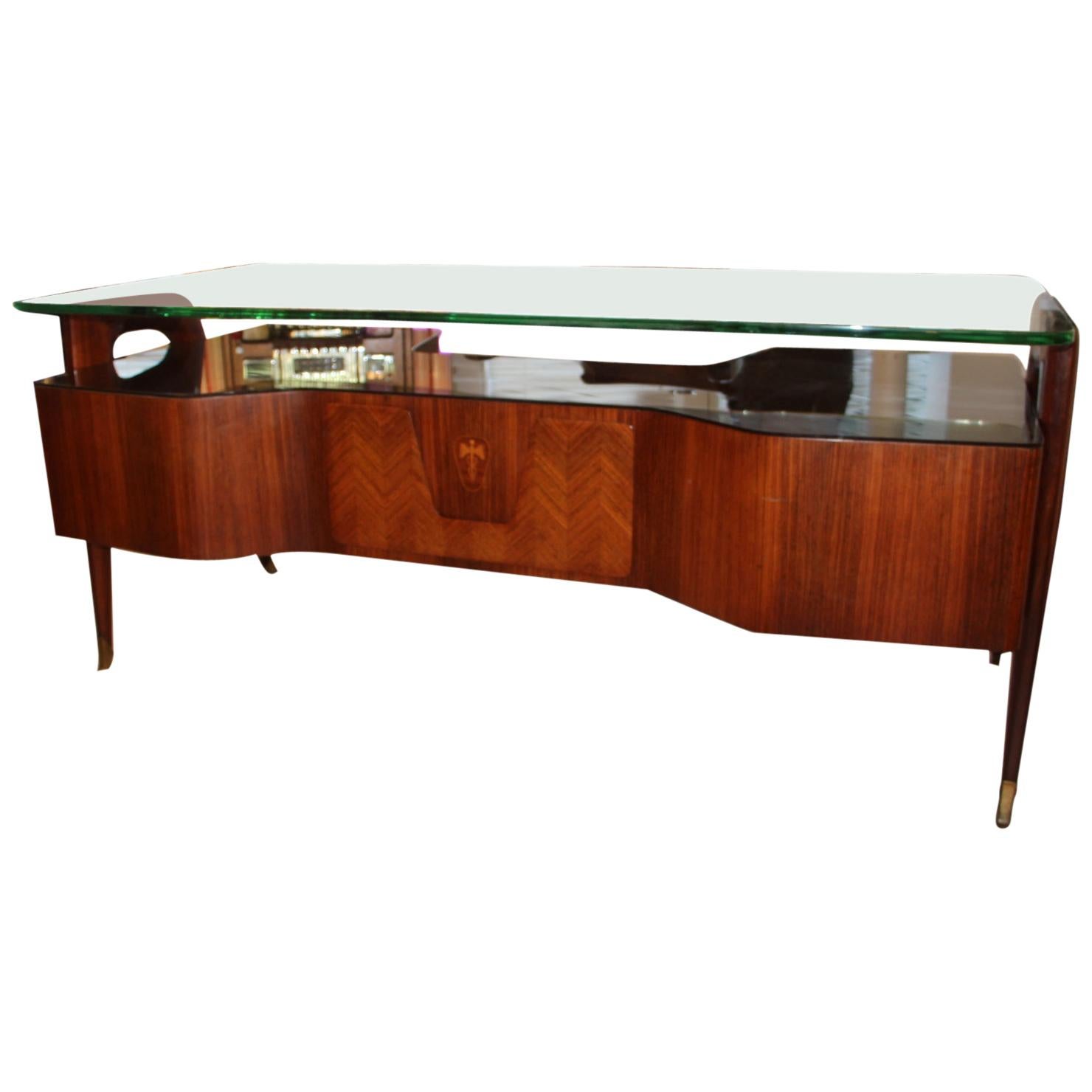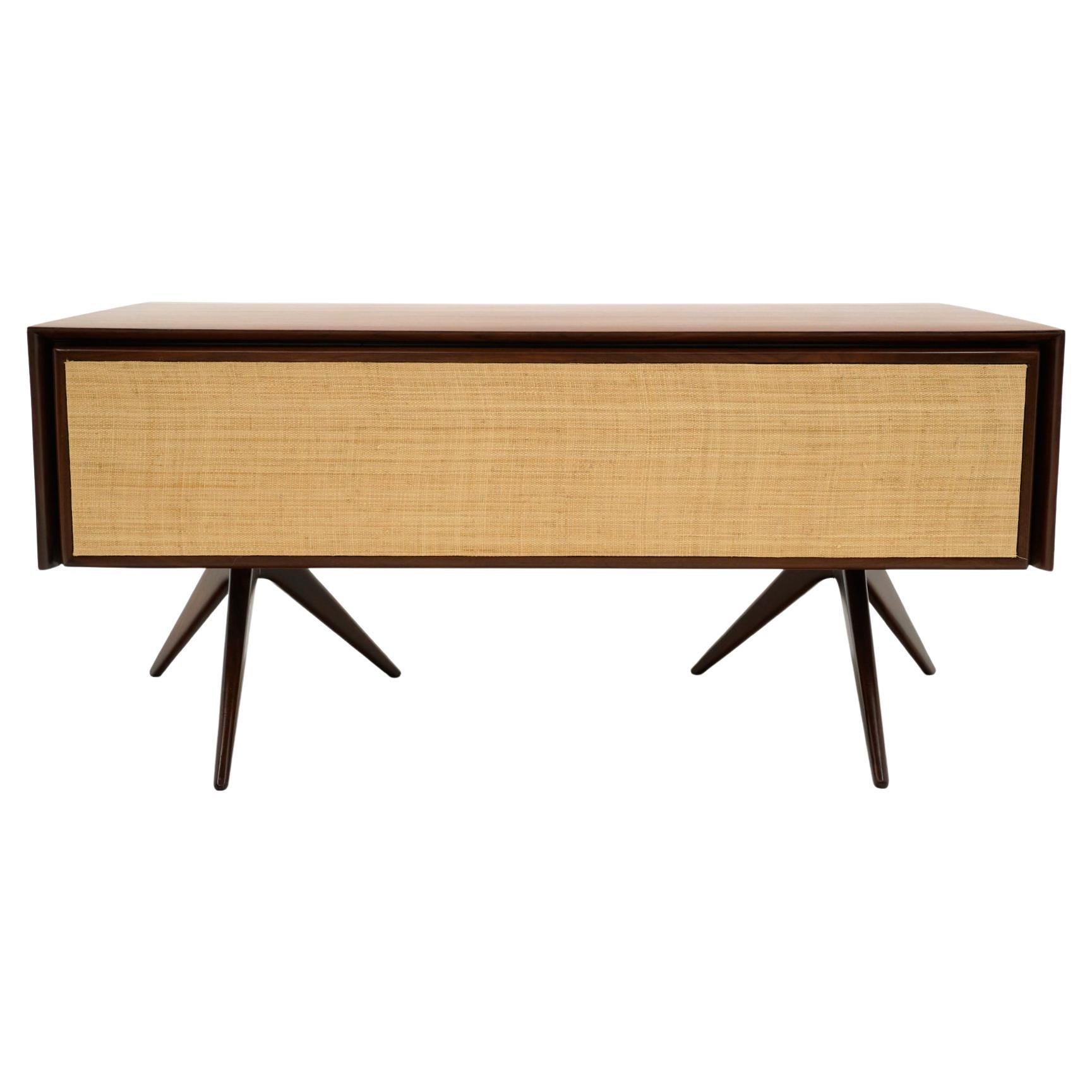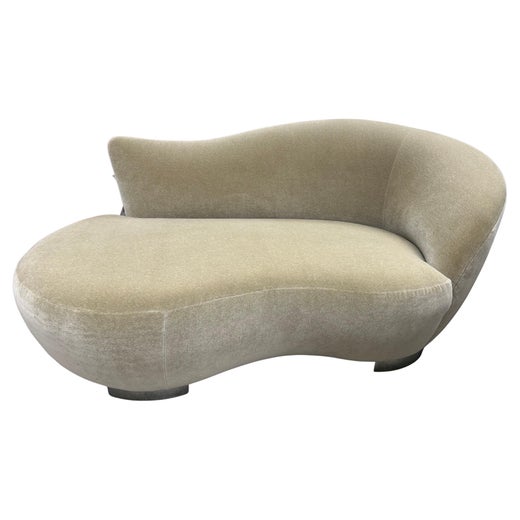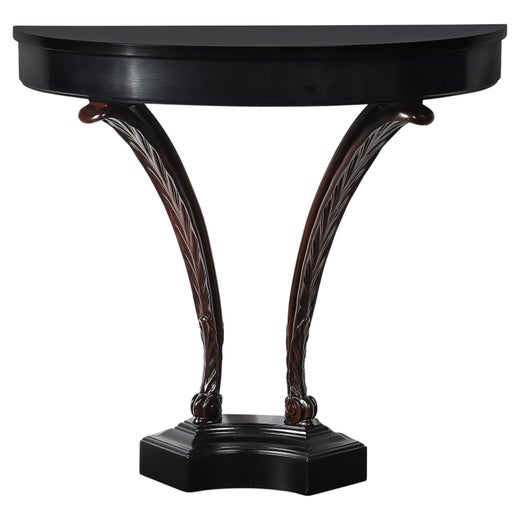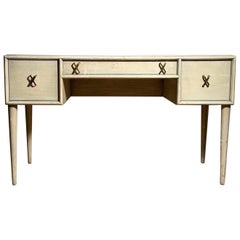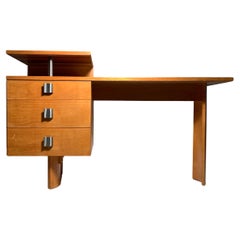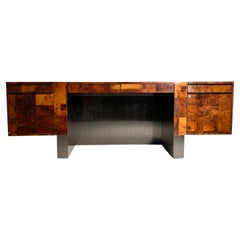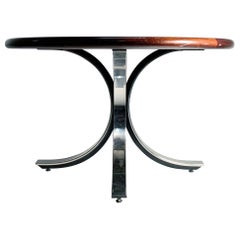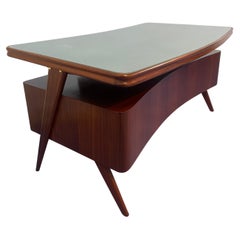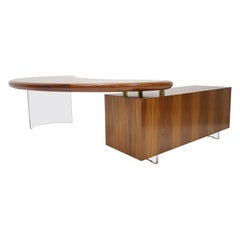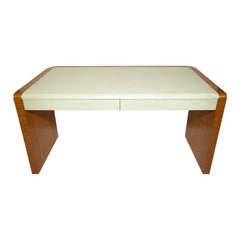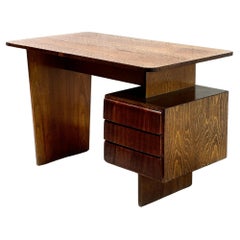Early Vladimir Kagan Custom Order Desk
About the Item
- Creator:Grosfeld House (Maker),Vladimir Kagan (Designer)
- Dimensions:Height: 28.63 in (72.73 cm)Width: 60 in (152.4 cm)Depth: 26 in (66.04 cm)
- Style:Mid-Century Modern (Of the Period)
- Materials and Techniques:
- Place of Origin:
- Period:
- Date of Manufacture:1950s
- Condition:
- Seller Location:Chicago, IL
- Reference Number:1stDibs: LU978637903342
Vladimir Kagan
The pioneers of modern furniture design in America in the mid-20th century all had their moments of flamboyance: Charles and Ray Eames produced the startling, biomorphic La Chaise; George Nelson’s firm created the Marshmallow sofa; Edward Wormley had his decadent Listen to Me chaise. But no designer of the day steadily offered works with more verve and dynamism than Vladimir Kagan. While others, it seems, designed with suburban households in mind, Kagan aimed to suit the tastes of young, sophisticated city-dwellers. With signature designs that feature sleekly curved frames and others that have dramatic out-thrust legs, Kagan made furniture sexy.
Kagan’s father was a Russian master cabinetmaker who took his family first to Germany (where Vladimir was born) and then to New York in 1938. After studying architecture at Columbia University, Kagan opened a design firm at age 22 and immediately made a splash with his long, low and sinuous Serpentine sofa. Furniture lines such as the Tri-symmetric group of glass-topped, three-legged tables and the vivacious Contours chairs soon followed.
Kagan’s choices of form and materials evolved through subsequent decades, embracing lucite, aluminum and burl-wood veneers. By the late 1960s, Kagan was designing austere, asymmetrical cabinets and his Omnibus group of modular sofas and chairs. For all his aesthetic élan, Kagan said that throughout his career, his touchstone was comfort. “A lot of modern furniture was not comfortable. And so comfort is: form follows function. The function was to make it comfortable,” he once commented. “I created what I called vessels for the human body.”
A diverse group of bodies have made themselves at home with Kagan designs. Among the famous names who commissioned and collected his designs are Marilyn Monroe, Gary Cooper, Andy Warhol, David Lynch, Angelina Jolie and Brad Pitt, and firms such as Gucci and Giorgio Armani. His work is in numerous museum collections, including those of the Victoria & Albert and the Metropolitan Museum of Art.
Because of its idiosyncrasy, Kagan’s work did not lend itself to mass-production. Kagan never signed on with any of the major furniture-making corporations, and examples of his designs are relatively rare. As you will see from the offerings on 1stDibs, even decades after their conception, Kagan pieces still command the eye, with their freshness, energy, sensuality and wit.
Grosfeld House
The New York City modern furniture manufacturer and retailer Grosfeld House, which had showrooms in Chicago and Los Angeles, forged enduring partnerships with celebrated designers and is known to collectors for its vintage Lucite furniture and other pieces made between the 1930s and the 1970s.
Following the introduction of Lucite in the 1930s, Grosfeld House used the acrylic plastic extensively in its manufacture of everything from coffee tables to chairs to mirrors — its “Glassic” line came to encompass all manner of furnishings. Owing to offerings that took on unconventional forms as well as an integration of flamboyant ornamentation such as lacquered parchment, gilt metal and ebonized wood, the brand became popular with decorators who worked in what we now call the Hollywood Regency style. Grosfeld House also produced chairs, end tables and other pieces in historical furniture styles such as Hepplewhite and Louis XV.
Grosfeld House prospered under the creative direction of furniture designer Lorin Jackson, whose collections of plastic furniture became popular with consumers, and enjoyed collaborations with designers such as distinguished German-American creator Vladimir Kagan.
Kagan, whose oft-copied furnishings for Directional are well-known to collectors, created nearly 150 pieces for Grosfeld House. Eugene Schoen, an American architect and designer most closely associated with the Art Deco style, also developed pieces for the company, while designer Marc Berge made understated mid-century modern furniture for Grosfeld House into the 1960s.
Find vintage Grosfeld House tables, seating and storage pieces for your home on 1stDibs.
- ShippingRetrieving quote...Shipping from: Chicago, IL
- Return Policy
More From This Seller
View AllMid-20th Century American Mid-Century Modern Desks and Writing Tables
Wood
Mid-20th Century American Art Deco Desks and Writing Tables
Wood
Mid-20th Century American Mid-Century Modern Desks and Writing Tables
Wood
Mid-20th Century American Mid-Century Modern Dining Room Tables
Steel
Mid-20th Century American Mid-Century Modern Credenzas
Wood
20th Century American Mid-Century Modern Carts and Bar Carts
Wood
You May Also Like
Vintage 1950s Italian Mid-Century Modern Desks
Glass, Teak
20th Century American Mid-Century Modern Desks and Writing Tables
Brass
Vintage 1970s North American Desks and Writing Tables
Maple
Vintage 1970s Czech Mid-Century Modern Desks and Writing Tables
Beech
Vintage 1950s Italian Mid-Century Modern Desks and Writing Tables
Brass
Vintage 1950s American Mid-Century Modern Desks
Cane, Walnut
